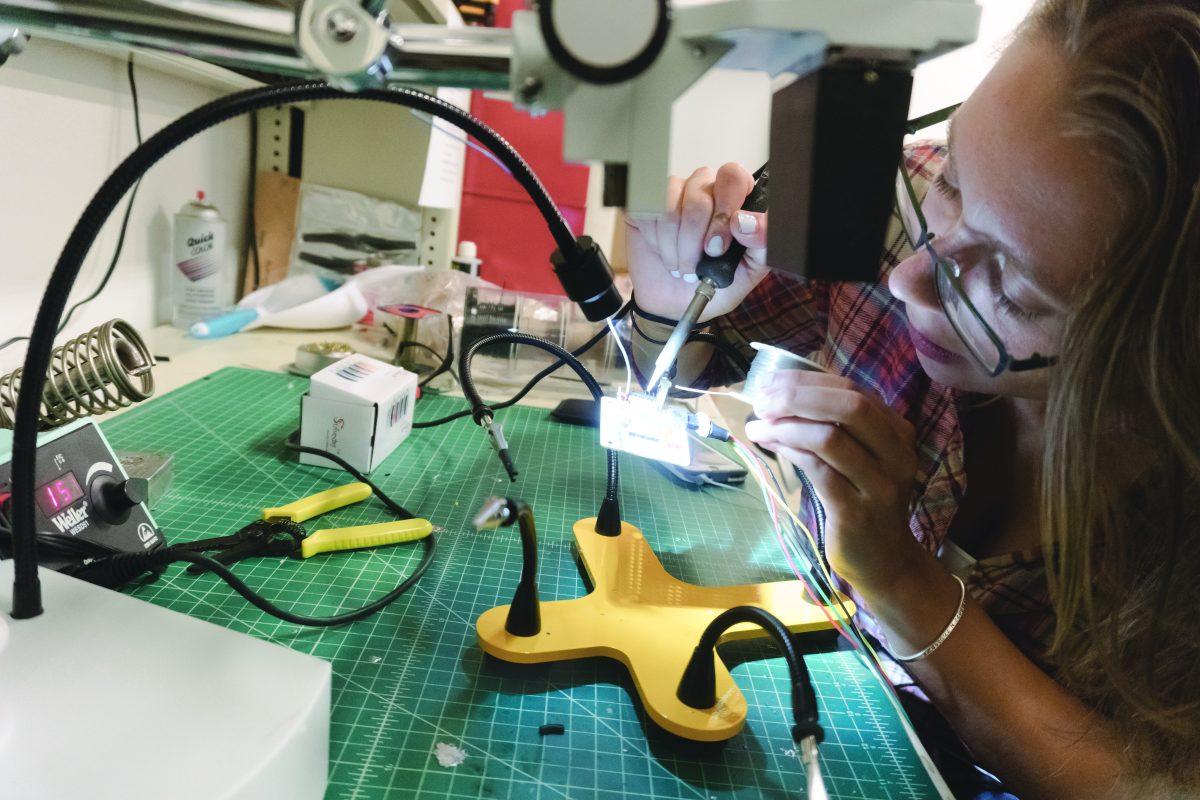A lab on campus is developing exoskeleton technology intended to help rehabilitate individuals who have experienced a stroke.
The Locomotor Control Systems lab is developing an exoskeleton called ComEx (Comet Exoskeleton), a new piece of robotic technology created to help assist and ease motor functions such as walking, running or going up a set of stairs for those having difficulties in such movements.
Robert Gregg, an assistant professor in biomedical engineering and mechanical engineering, leads the lab which designs and engineers the robotic exoskeleton.
“We have researched in exoskeletons in relation to design. How do we design them to have powerful motors that weigh less? We have to wear them eventually, right?” Gregg said.
The exoskeleton technology works using a version of artificial intelligence known as control theory.
The user can secure the exoskeleton around their leg by using the Velcro straps attached to it. Different mechanical sensors on this external limb are used to track various movements and forces to follow and synchronize with the patient’s movements and then enhance those movements with its own motors. This method does not require any chip implantation.
Instead of being solely controlled by a computer or by preprogrammed codes such as traditional AI, the exoskeleton relies mainly on human interaction. This allows for the motions to feel natural to the human user, despite wearing a robotic leg attachment.
“It’s artificial, because it is programmed and it does respond intelligently, it reacts to the environment, it responds to any kind of disturbance and it follows the motion of the intended user,” Gregg said.
While it does act like AI, it also incorporates the desires of the human user by allowing the user to guide the limb using the exoskeleton.
“Truly, there is a human in the loop who is controlling the process, whereas with a driverless car which is kind of what we think about most times with (artificial intelligence), there is a human loosely involved,” Gregg said.
The LCS lab tests the different versions of the robotic attachment in order to understand how it can be improved, leading to different generations of the exoskeleton.
In addition, the exoskeleton is composed of parts created at UTD such as the motors, used to control locomotive actions, an essential component in this piece of technology. It is currently in its testing stages on subjects and is in its third generation from the original model.
“I am going to be wearing the ComEx tomorrow,” said Emma Reznick, a research assistant at the LCS lab. “I am very excited about it. It’s my first time actually getting to wear it. ”
The National Institutes of Health, the National Science Foundation and the Burroughs Wellcome Fund fund the project and gave $4 million in grants.
The technology has the potential to make motor functions for stroke victims and elderly patients active again.
While the technology has yet to be commercialized, the LCS lab is working towards that as well.
“We are in the process of working on our licensing agreement with a publicly traded company for some of our technology,” Gregg said. “We are also in the process of spinning a startup company for some other technology. So we are doing our best to push forward the commercialization.”













